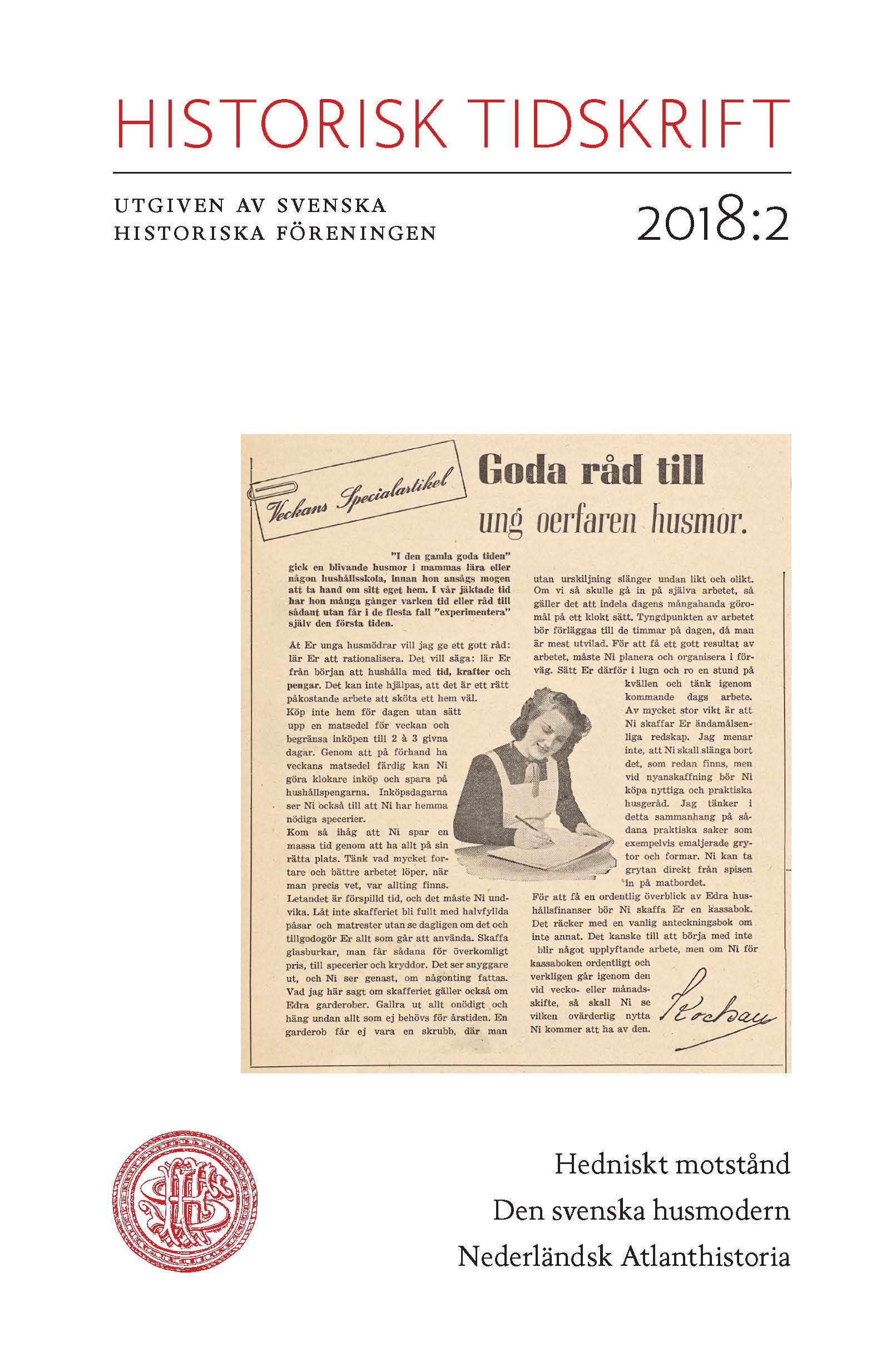Abstract
Pagan revolts in the late eleventh century in the Svealand region of Sweden
Medieval Swedish and Icelandic sources mention the occurrence of a pagan revolt in the late eleventh century in the Svealand region of Sweden, whereby the Christian king Inge was expelled and temporarily replaced by the pagan king Sven. The revolt was for long an accepted part of Swedish history – representing the final struggle between paganism and Christianity – but has recently been called into question. Among other objections it has been argued that it is improbable that a pagan revolt occurred at such a late date, since Christianity was supposedly already far advanced in Svealand at the time. This article re-evaluates the religious conditions in Svealand at the end of the eleventh century to assess if a pagan revolt can be deemed probable at this late date. The probability of a revolt has been addressed within a wider context that compare the Svealand revolt with better-documented pagan revolts in other newly Christianised regions at approximately the same time. Against this background, it is argued that the objections raised against the historicity of a pagan revolt in Svealand at the end of the eleventh century are unfounded.
In contemporary written sources Sweden is portrayed as a region of Christian mission, in contrast to Denmark, Norway, and Iceland that are portrayed as fully Christianised countries already. It is also stated that Svealand, especially the province of Uppland, had a much stronger pagan opposition to Christianity than Götaland. Both the high medieval Swedish legends of saints and the Icelandic sagas paint the same picture of a late and slow Christianisation of Sweden, compared to the neighbouring countries, that contemporary sources do. Archaeological evidence, furthermore, shows that the transition to Christian burial customs occurred by or before AD 1000 in Denmark, Norway, and Götaland, but that pre-Christian burial customs prevailed, especially in the central and northern parts of the province of Uppland, in Svealand until c. AD 1100. The raising of the late Viking Age type of runestones – an indication of Christianisation – started considerably later, and continued for a longer time, compared to elsewhere, in the same regions of Uppland where late pre-Christian burial sites have been found.
Both contemporary and later written sources, as well as the archaeological evidence, are thus in agreement that Svealand, especially Uppland, exhibited such religions conditions by the late eleventh century that a pagan revolt indeed appears very plausible. Neither can strong paganism in this region be considered surprising given that most areas around the shores of the Baltic Sea had a non-Christian population by AD 1100. The population in Svealand had much contact with these non-Christian areas across the Baltic Sea and more limited interactions with Roman Catholic Western Europe than the population in Denmark, Norway, or Götaland, which likely resulted in slower and later Christianisation. Nor should a pagan revolt in Svealand in the late eleventh century be considered surprising in light of the fact that several other newly Christianised regions in northern and eastern Europe experienced such revolts at approximately the same time. Pagan revolts occurred well after Christian kingship and a rudimentary ecclesiastic organisation had been established among the Wends and in Hungary and Poland. Many of the elements found in these pagan revolts are similar to those related in the written sources that describe the pagan revolt said to have occurred in Svealand.
The conclusion must therefore be that such religious conditions existed in Svealand at the end of the eleventh century that a pagan revolt could plausibly have occurred such as is described in medieval written sources. The arguments against the historical existence of the pagan revolt, in contrast, are not well founded. There is every reason to consider the occurrence of a pagan revolt in the late eleventh century as an actual event in Swedish history, although the details in the written sources regarding the event are not necessarily to be trusted.

